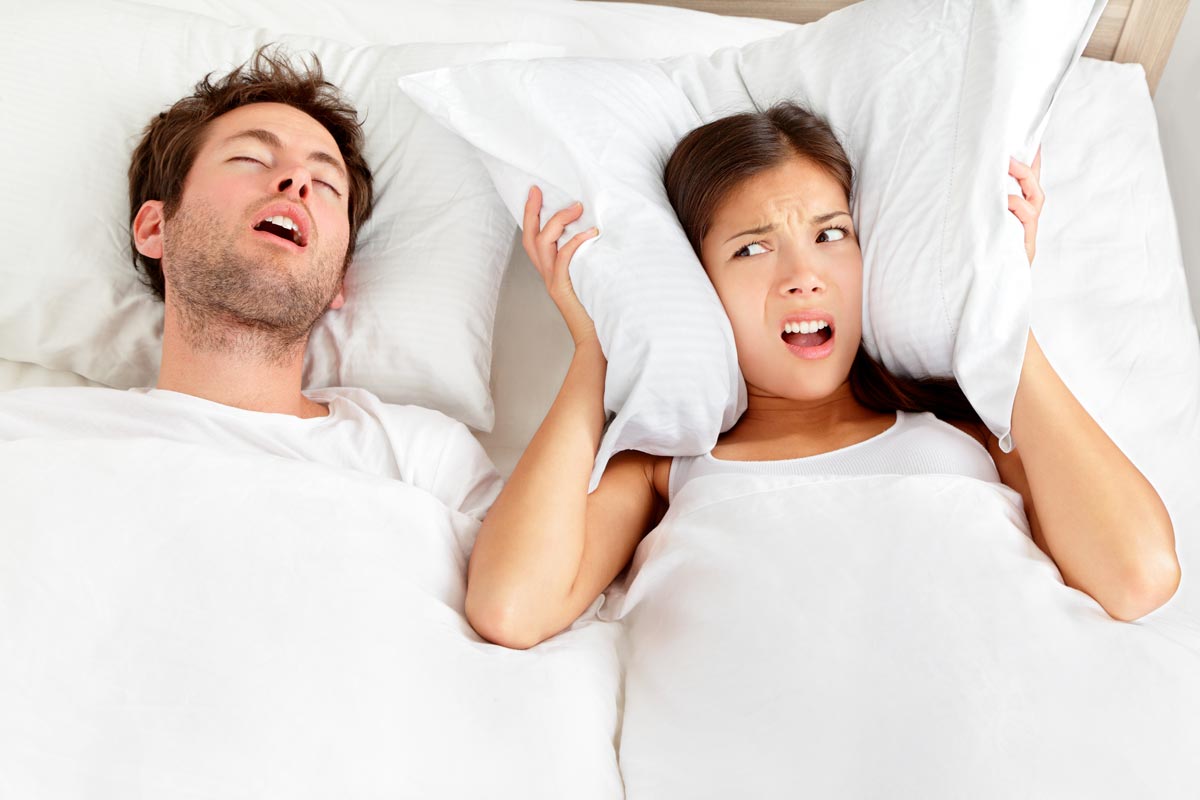
Snoring Like a Trooper
As the famous English novelist Anthony Burgess once said, “Laugh and the World Laughs with You; Snore and You Sleep Alone”.
There are jokes galore to be found on the subject of snoring, and almost as many similes. In researching this piece, Dormeo came across the sound of snoring described as: like a freight train; like a warthog; like a congested walrus. And our own personal favourite… like a chainsaw fighting a grizzly bear driving a bulldozer.
According to the NHS however, the official definition of snoring is ‘making a noticeable sound when breathing in during sleep’ and it needn’t be particularly loud. Snoring is very common and is thought to affect at least 40% of the population– although most of these will probably deny that they snore. In most cases it’s not a great cause for concern, although the partners of heavy snorers may well disagree with us there…
Snoring actually occurs when the soft tissue of the mouth, nose, or throat vibrates. This is caused by air struggling to pass through airways that are in some way obstructed. The particular sound produced can vary dramatically in volume and intensity from a very loud snort to a soft rattle and is dependent on which tissue is vibrating at the time. The loudest snores come from the vibration of the soft palate in the roof of the mouth.
Most snoring occurs during the deepest sleep, about 90 minutes after falling asleep (remind yourself of the Stages of Sleep by visiting our previous blog post here), and tends to be worse when snorers sleep on their back. Research also suggests that about twice as many men snore as women, but the jury is still out on exactly why this is. What we do know is that you have a condition that is likely to cause a partial airway obstruction, you are more likely to snore. Some of these include:
- a narrow throat or narrow nasal passages;
- a longer than normal soft palate or uvula (the dangly bit at the back of the throat);
- a deviated nasal septum;
- enlarged adenoids;
- enlarged tonsils (particularly common in children that start snoring suddenly);
- asthma;
- a cold or sinus infection.
We also know that you are more likely to snore if you are a smoker (smoking narrows the airways), overweight (thanks to excess fatty tissue and poor muscle tone around the neck) and 40 years old or above (as the muscle tone in our throats starts to deteriorate).
But you are also more likely to snore if you have taken a muscle-relaxing substance. These can cause a previous non-snorer to start snoring, or an existing snorer to start snoring even more (or more loudly!) than usual. Such substances include alcohol (sorry everyone!), antihistamines and any kind of sedative.
You can’t do much about asthma or narrow nasal passages but if snoring is an issue for you, losing weight, sleeping on your side, stopping smoking and not drinking alcohol three hours before bedtime are recommended. Doesn’t sound like much fun, right? But ‘sleeping’ next to a snorer is certainly no fun either and snorers often cite relationship difficulties as the reason they are seeking help. Some sufferers find a humidifier in their bedroom works wonders, and others swear by the nasal strips you can buy at the pharmacy (bear in mind these won’t help if you’re a throat-snorer).
In rare cases, snoring can be a symptom of Obstructive Sleep Apnoea a condition which causes the sufferer to stop breathing in their sleep. Look out for our article next month on Sleep Apnoea.
“Those who snore, always fall asleep first”.
If you live with a snorer, you’ll recognise the sentiment. You can help to ensure that YOU fall asleep first however, by ensuring you have a good quality mattress that suits you. Dormeo has been bringing the highest quality Italian-made memory foam mattresses direct to people’s homes for the last 10 years and we believe that everybody should sleep on the very best mattress they can afford. Whether that is from our luxury Octaspring range or from our best-selling Dormeo Memory Foam range, Dormeo mattresses are made for every body, every bedroom, and every budget.
Our Octaspring Body Zone Topper is made from hundreds of breathable Octaspring® foam springs topped with a luxurious layer of high quality memory foam. This topper offers unique zonal support and is 8 times more breathable than traditional memory foam toppers. It will rejuvenate any bed with Octaspring® technology at a fraction of the price of replacing your old mattress.








I received my mattress on Friday and initially put on top of my old mattress just in case as it looked rather thin. What a relevation best nights sleep ever so comfortable snug as a bug in a rug, thank you.
Replies
We're so pleased to hear this Moira! Thank you for taking the time to let us know.